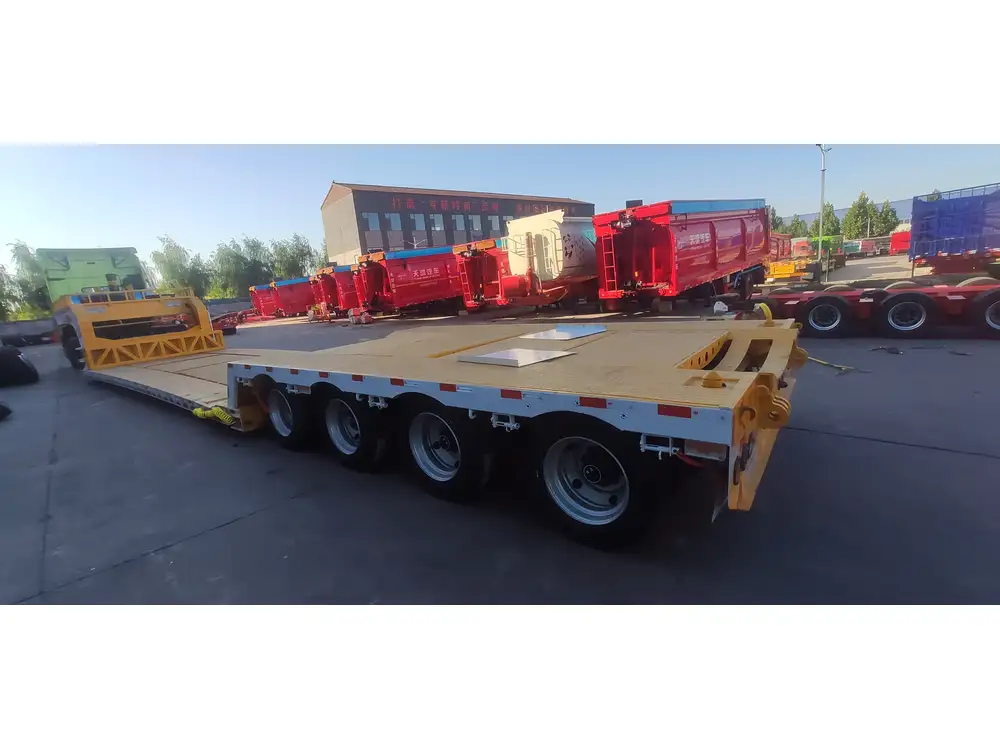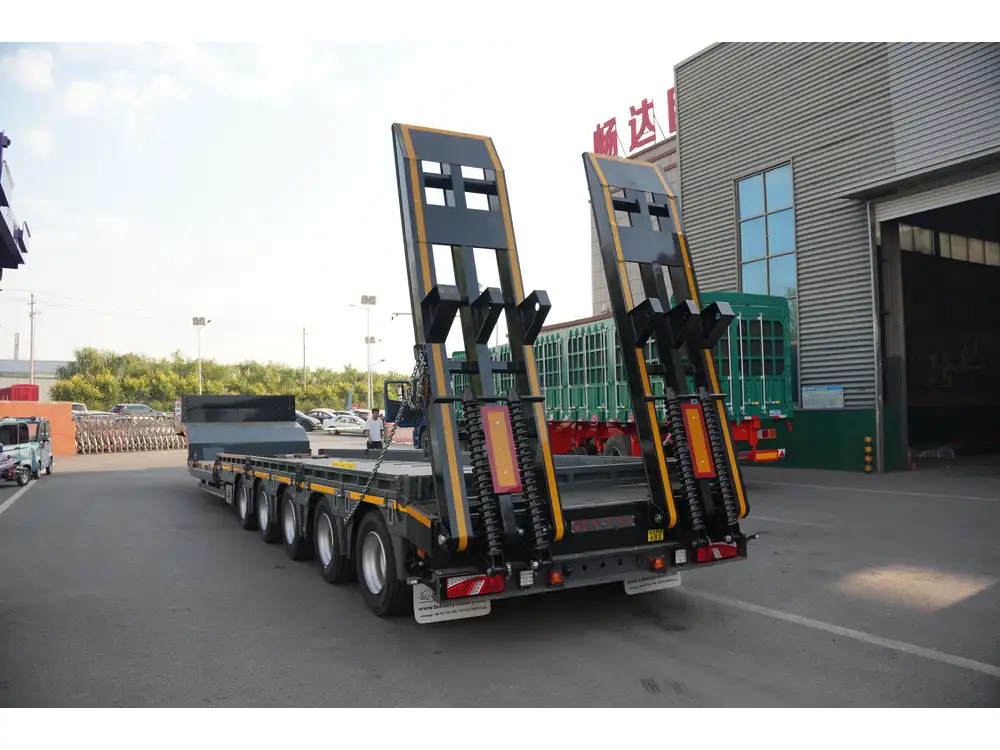In the realm of energy solutions, understanding the nuances between various fuel types is crucial for making informed decisions. Among these, butane and Liquefied Petroleum Gas (LPG) stand out due to their widespread applications and significant impact on various industries. At CarMax Vehicle, we recognize the importance of these distinctions, especially in sectors reliant on efficient and safe energy sources, such as the manufacturing of semi-trailers. This article delves into the multifaceted differences between butane and LPG, providing a detailed comparison to aid in your decision-making process.
Table of Contents
- Introduction
- What is LPG?
- What is Butane?
- Composition and Chemical Structure
- Physical Properties
- Energy Content
- Applications and Uses
- Storage and Transportation
- Safety Considerations
- Environmental Impact
- Cost and Availability
- Choosing Between Butane and LPG
- Conclusion
- Frequently Asked Questions
Introduction
The choice between butane and LPG can significantly influence operational efficiency, safety, and environmental sustainability. While these fuels share similarities, their differences are pivotal in determining their suitability for specific applications. This comprehensive analysis explores these differences in depth, ensuring that stakeholders can make choices aligned with their operational needs and sustainability goals.

What is LPG?
Liquefied Petroleum Gas (LPG) is a versatile fuel composed primarily of propane (C₃H₈) and butane (C₄H₁₀). It is produced during the refining of crude oil or extracted from natural gas streams. LPG is stored under moderate pressure in liquid form and vaporizes upon release, making it a convenient and portable energy source.
Key Characteristics of LPG:
- Composition: A mixture of propane and butane.
- State at Room Temperature: Gas, but stored as a liquid under pressure.
- Usage: Widely used for heating, cooking, and as fuel for vehicles.
What is Butane?
Butane is one of the primary constituents of LPG but can also exist independently. As a hydrocarbon with the chemical formula C₄H₁₀, butane is a colorless and highly flammable gas at room temperature, which is easily liquefied under pressure.

Key Characteristics of Butane:
- Composition: Pure butane (C₄H₁₀).
- State at Room Temperature: Gas, liquefied under pressure.
- Usage: Commonly used in lighters, portable stoves, and as a propellant in aerosol sprays.
Composition and Chemical Structure
Understanding the chemical composition of butane and LPG is fundamental to discerning their differences.
| Aspect | Butane | LPG |
|---|---|---|
| Chemical Formula | C₄H₁₀ | Primarily C₃H₈ and C₄H₁₀ |
| Isomers | n-Butane and isobutane | Varies, often a blend of propane and butane |
| Molecular Structure | Straight-chain or branched structures | Mixture depending on source and refining process |
Butane exists in two isomeric forms: n-butane (normal butane) and isobutane. LPG, being a blend, may contain varying ratios of these isomers alongside propane, enhancing its versatility for different applications.
Physical Properties
The physical properties of butane and LPG influence their handling, storage, and usage.
| Property | Butane | LPG |
|---|---|---|
| Boiling Point | -0.5°C (31.1°F) | Propane: -42°C (-43.6°F) Butane: -0.5°C (31.1°F) |
| Density | Approximately 2.48 kg/m³ (gas) | Varies; propane is lighter, butane is similar to butane |
| Vapor Pressure | Higher vapor pressure than propane | Dependent on the propane/butane ratio |
Butane’s higher boiling point compared to propane makes it less suitable for colder climates, as it may fail to vaporize effectively, impacting its performance.

Energy Content
Energy density is a critical factor in evaluating fuel efficiency and suitability for various applications.
| Fuel Type | Energy Content (Higher Heating Value) |
|---|---|
| Butane | ~45.7 MJ/kg |
| Propane | ~50.35 MJ/kg |
| LPG | Varies between ~46-50 MJ/kg depending on the blend |
LPG typically offers a slightly higher energy content compared to pure butane, particularly when the propane content is elevated, enhancing its efficiency as a fuel source.
Applications and Uses
Both butane and LPG have versatile applications, yet their suitability varies based on their properties.
Butane Applications:
- Portable Cooking Devices: Ideal for small, portable stoves due to its ease of liquefaction.
- Lighters and Torches: Commonly used in disposable and refillable lighters.
- Aerosol Propellants: Employed in the production of various aerosol products.

LPG Applications:
- Residential Heating and Cooking: Widely used in homes lacking natural gas infrastructure.
- Industrial Processes: Utilized in manufacturing and processing industries.
- Vehicle Fuel (Autogas): Converted for use in vehicles as a cleaner alternative to gasoline and diesel.
- Agricultural Uses: Employed for crop drying and other farming operations.
At CarMax Trailer, LPG may be used in auxiliary power units or heating systems within semi-trailers, highlighting its versatility and reliability in industrial applications.
Storage and Transportation
The storage and transportation requirements for butane and LPG are essential considerations for safety and efficiency.
Butane Storage:
- Containers: Typically stored in pressurized steel cylinders.
- Temperature Sensitivity: Less effective in cold climates due to higher boiling points.
- Transportation: Requires adherence to hazardous material regulations, ensuring secure containment to prevent leaks.

LPG Storage:
- Containers: Stored in tanks designed to maintain pressure and prevent vaporization.
- Flexibility: The blend’s propane component allows it to perform better in varying temperatures.
- Transportation: Similar to butane, LPG transportation demands strict compliance with safety standards to mitigate risks.
Proper storage solutions are paramount to ensure the safety and longevity of both fuel types, with specialized containers and infrastructure necessary for efficient handling.
Safety Considerations
Safety is a paramount concern when dealing with flammable gases like butane and LPG. Understanding the inherent risks and implementing appropriate measures is essential.
Common Safety Risks:
- Flammability: Both fuels are highly flammable and can form explosive mixtures with air.
- Asphyxiation: In high concentrations, they can displace oxygen, posing breathing hazards.
- Leaks: Undetected leaks can lead to fire hazards or health risks.

Safety Measures:
- Proper Ventilation: Ensures the dispersion of gas in case of leaks.
- Regular Inspections: Routine checks for leaks and container integrity.
- Usage of Safety Devices: Installation of flame arrestors and pressure regulators to prevent accidental releases.
At CarMax Vehicle, safety protocols are integrated into the design and manufacturing of semi-trailers, ensuring that any fuel systems utilizing butane or LPG adhere to stringent safety standards.
Environmental Impact
The environmental footprint of energy sources is increasingly scrutinized in today’s eco-conscious landscape. Both butane and LPG have distinct environmental implications.
Butane:
- Carbon Emissions: Emits carbon dioxide upon combustion, contributing to greenhouse gas emissions.
- Production Impact: Extraction and refining processes can lead to environmental degradation if not managed responsibly.

LPG:
- Cleaner Burning: Generally produces fewer pollutants compared to gasoline and diesel, resulting in lower carbon emissions.
- Methane Leakage: Potential methane emissions during extraction and transportation can offset some environmental benefits.
Choosing between butane and LPG involves balancing energy needs with environmental responsibility, striving to minimize the ecological impact while maintaining operational efficiency.
Cost and Availability
Economic factors heavily influence the choice between butane and LPG, with cost-effectiveness and availability being critical considerations.
Butane:
- Cost: Typically more expensive per unit of energy compared to propane due to its specific applications.
- Availability: Less widely available than LPG, especially in regions where LPG infrastructure is established.

LPG:
- Cost: Generally more cost-effective, especially for large-scale and industrial applications.
- Availability: Widely accessible in many regions, supported by extensive distribution networks.
For manufacturers like CarMax Trailer, the cost and availability of fuel types can impact operational expenses and supply chain logistics, making LPG a more viable option in many scenarios.
Choosing Between Butane and LPG
Selecting the appropriate fuel depends on multiple factors, including application requirements, environmental considerations, cost constraints, and safety protocols.
Decision Factors:
- Application Specifics: Determine the energy needs and suitability for the intended use.
- Climate Conditions: Evaluate performance in various temperature ranges.
- Safety Requirements: Assess the implementation of safety measures necessary for each fuel type.
- Environmental Goals: Align fuel choice with sustainability and emission reduction targets.
- Budget Constraints: Consider the long-term cost implications and availability of each fuel.

Practical Scenarios:
- Residential Heating: LPG is often preferred due to its reliable performance in different climates and cost-effectiveness.
- Portable Cooking: Butane is favorable for its ease of use in small, portable devices.
- Industrial Applications: LPG’s versatility and higher energy content make it suitable for larger-scale operations.
By carefully analyzing these factors, businesses can make informed choices that enhance efficiency, safety, and sustainability.
Conclusion
The differences between butane and LPG are nuanced yet significant, impacting their suitability for various applications across industries. CarMax Vehicle and CarMax Trailer recognize the importance of these distinctions in optimizing operational efficiency and ensuring safety in the manufacturing and utilization of semi-trailers. By understanding the composition, physical properties, energy content, applications, storage requirements, safety considerations, environmental impact, and cost factors, stakeholders can make strategic decisions that align with their operational goals and sustainability commitments.
Frequently Asked Questions

1. Can butane and LPG be used interchangeably in appliances?
While both butane and LPG can fuel similar appliances, compatibility depends on the appliance’s design and the local climate. LPG’s propane component makes it more versatile in colder conditions, whereas butane may not vaporize effectively in low temperatures.
2. Which fuel is more environmentally friendly, butane or LPG?
LPG generally produces fewer pollutants compared to butane due to its propane content, making it a cleaner-burning option. However, both contribute to carbon emissions, and their environmental impact can vary based on usage and management practices.
3. Is one fuel type more cost-effective than the other?
Typically, LPG is more cost-effective, especially for large-scale and industrial applications, due to its widespread availability and lower cost per unit of energy compared to pure butane.

4. What safety measures are essential when handling butane and LPG?
Essential safety measures include proper ventilation, regular inspections for leaks, the use of safety devices like pressure regulators and flame arrestors, and adherence to storage and transportation regulations to mitigate risks associated with flammability and asphyxiation.
5. How does temperature affect the performance of butane and LPG?
Butane has a higher boiling point, making it less effective in colder climates as it may not vaporize properly, whereas LPG, with its propane component, performs reliably across a broader temperature range, maintaining its efficiency in both cold and warm conditions.



